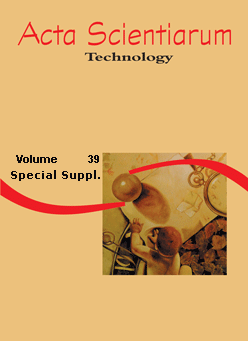<b>Inoculum concentration and inoculation time for propionic acid production from whey using mixed culture of <i>Lactobacillus helveticus</i> and <i>Propionibacterium freudenreichii</i> PS-1
DOI:
https://doi.org/10.4025/actascitechnol.v39i5.29479Keywords:
skimmed whey, lactic bacteria, propionic fermentation, organic acids.Abstract
Â
The production of propionic acid using skim serum by-products of the dairy industry was investigated, and the influence of inoculum concentration of Propionibacterium freudenreichii PS-1 and its time of inoculation for the production of propionic acid was evaluated using mixed culture of Lactobacillus helveticus and Propionibacterium freudenreichii. Initially, the adjustment of propionic bacteria to higher concentrations of propionic acid was tested and kinetic parameters were determined for growth. A central composite rotational design (CCRD) with 11 experiments was carried out, using different inoculum concentrations of P. freudenreichii, which were added to the cultures of lactic bacteria at different times. The maximum specific growth rate for P. freudenreichii decreased from 0.11 to 0.03 hour-1and the growth time increased from 32h to 100h when concentration of propionic acid in lactate broth increased to 0.25%. The best result for propionic acid production was 3.78 g L-1, inoculating 5.108 CFU mL-1 of propionic bacteria after 6 h. For lactose consumption, the best conditions were inoculum concentration above 5.108 Â CFU mL-1 and inoculation time of P. freudenreichii after 6 hours. Therefore, it was demonstrated that skimmed whey can be used as a renewable, low-cost raw material for propionic acid production by mixed culture.
Â
Downloads
Downloads
Additional Files
Published
How to Cite
Issue
Section
License
DECLARATION OF ORIGINALITY AND COPYRIGHTS
I Declare that current article is original and has not been submitted for publication, in part or in whole, to any other national or international journal.
The copyrights belong exclusively to the authors. Published content is licensed under Creative Commons Attribution 4.0 (CC BY 4.0) guidelines, which allows sharing (copy and distribution of the material in any medium or format) and adaptation (remix, transform, and build upon the material) for any purpose, even commercially, under the terms of attribution.
Read this link for further information on how to use CC BY 4.0 properly.



















8.png)




